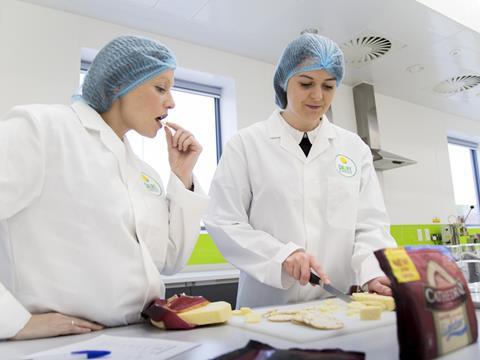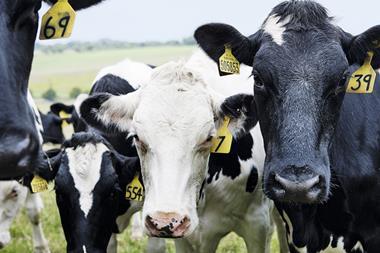
Fresh from offloading its loss-making liquid milk business, Dairy Crest is pinning its future on innovation and its key brands. Central to this is its brand new £4m innovation centre.
Nestled next to tractors, fields of animals and agricultural buildings on the Harper Adams University campus in Shropshire is a shiny new innovation centre Dairy Crest hopes will keep it ahead of rivals.
The sedum flower-topped building took three years to design and build, and Dairy Crest hails it as a unique partnership between an fmcg company and a university.
The new innovation centre brings Dairy Crest’s 30 full-time R&D staff together at one site, where they can experiment with ingredients, products and packaging while having access to some of the top food and farming research and equipment in the country - from the latest micro-analytical technology to development kitchens and packaging labs.
The open plan work area has plenty of space for Dairy Crest’s boffins to brainstorm and develop new ideas for its big brands, including a Google-esque brainstorming room full of bright colours and bean bags.
The centre only opened in November, so hasn’t yet produced tangible NPD, but Dairy Crest’s latest version of Clover (which started life at its former manufacturing facility at Crudgington) was worked on here.
There is also a large pilot plant on site that allows staff to scale up production, and gives them plenty of room to expand when new technology comes on line.
The centre also has first-rate sustainability credentials, says Dairy Crest NPD director Fiona Phillips. It can boast thermal efficiency and airtightness double to what building regulations require, and is illuminated by LED lights throughout, while the sedum roof is “such an amazing insulator, we needed an extra mobile phone mast installed”.
New talent
The most innovative part of the centre, however, is its relationship with the university.
“We wanted a building that encouraged collaboration,” says Phillips, and part of this plan includes getting more young people to work in the food industry.
Siting the centre on campus was a “light bulb moment” adds CEO Mark Allen. “Innovation is massively important to us, with 70% of the growth of Cathedral City coming from NPD, and as a consumer-led business we have to keep innovating. Why wouldn’t we want to have the opportunity to use the facilities and academic strength of Harper Adams?”
The quid pro quo is that Dairy Crest can mine a valuable source of new talent. The centre offers a placement to two Harper Adams students a year, one of whom is 23-year-old Clare Jones, a BSc food and consumer studies student from Wrexham in North Wales.
Since September she has been assisting in the development of the Cathedral City and Davidstow brands, with her work encompassing everything from kitchen development work, food hygiene and pilot plant trials to marketing and retailing.
“I’ve learned how a product starts as raw material straight through to how it appears on shelf,” she says.

Harper Adams vice chancellor David Llewelyn is equally upbeat. He says the university’s relationship with Dairy Crest developed when the team moved to the campus from Crudgington while the innovation centre was being built, and proved an “effective way” for the staff and university to “get to know each other”.
Dairy Crest funded the facility, and pays the university a lease for the site. Harper Adams helped it apply for grant funding but describes the amount as “minimal”. Construction work “generated a lot of interest among students and campus visitors, and we now have the unique situation where a food company has an embedded R&D facility on campus” adds Llewelyn.
“The meeting of minds has been really pleasing, it has been mutually beneficial and we also have an agreement for collaboration between Dairy Crest and the university in academic activities.”
Importantly, the collaboration is an excellent opportunity for spotting graduate talent - and should be used as a model for innovation by other food companies, Llewelyn adds.
“The industry is crying out for talented young people and we are producing those graduates. And with placements these young people are work-ready.”















No comments yet